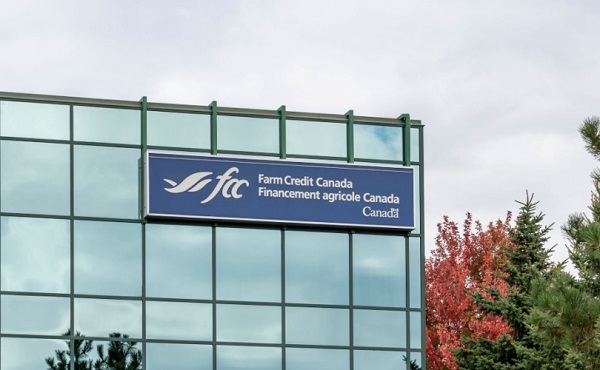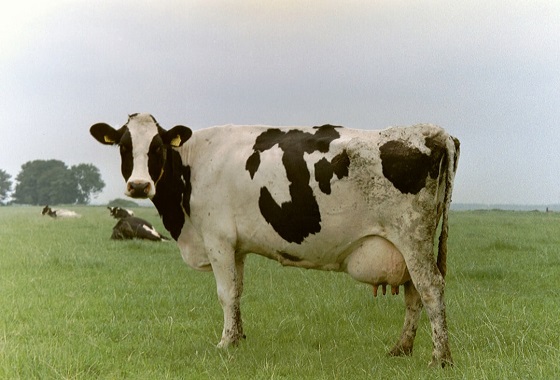Agriculture
Cannabis legalization voted Canadian Press’s Business Story of the Year

TORONTO — Canada’s trailblazing move to legalize cannabis for recreational use, which sparked an entirely new industry and had wide-ranging implications for nearly every facet of society, has been voted The Canadian Press Business News Story of the Year.
The term “disruption” in business has become so overused that it has become an empty cliche, but it is warranted in the case of pot legalization, said Andrew Meeson, deputy business editor at the Toronto Star.
“It’s hard to think of an area in Canada that hasn’t been shaken up: not just commerce (from criminal act to booming startup to takeover target in the blink of an eye), but also policing, health care, justice, politics. Even culture (just ask Tommy Chong),” he said.
“If that doesn’t make it the business story of the year, I don’t know what would.”
In an annual poll of the country’s newsrooms conducted by The Canadian Press, business editors and reporters across the country chose cannabis legalization in a landslide, with 60 per cent of the votes cast.
The terse negotiations between Canada, U.S. and Mexico towards a new North American Free Trade Agreement was a distant second with 30 per cent of votes.
Canada’s pipeline conundrum, with the Trans Mountain pipeline expansion now in limbo after a court overturned its regulatory approval in August and a U.S. court throwing out the Keystone XL pipeline’s presidential permit in November, came in third out of eight possible candidates with 10 per cent of the vote.
“Pipelines would have won, hands down if it weren’t for the creation of an entirely new industry in Canada,” said David Blair, a business columnist with CBC Radio. “Rarely, if ever, do journalists get to cover the opening of a new market, especially one that is as controversial as cannabis.”
The world was watching when the country made history with the first legal sale of non-medicinal pot just after midnight on Oct. 17 in Newfoundland and Labrador, due to its time zone being 30 minutes ahead of the rest of Canada.
It marked the beginning of what the New York Times dubbed Canada’s “national experiment,” and the culmination of months, if not years, of preparation by legislators and law enforcement officials at all levels and in each province, territory, and municipality.
While Oct. 17 represented an extension from the initial target set for July, and licensed producers ramped up production in the lead-up, long lines of customers were met with widespread product shortages online and in the relatively few bricks-and-mortar stores that were ready on day one.
Still, many Canadians were simply elated to be able to buy government-sanctioned pot after nearly 100 years of prohibition.
“My new dealer is the prime minister!” said Canadian fiddler and pop star Ashley MacIsaac, who in 2001 had been arrested for possession in Saskatchewan.
But cannabis mania had been bubbling for months before legalization, with retail investors rushing to invest in the latest pot company to list its stock. Cannabis company valuations in the lead up to Oct. 17 soared and some of the banks’ online direct investment platforms were bombarded with unprecedented trading volumes.
At one point producer Tilray Inc.’s stock on the Nasdaq exchange in September hit a peak of US$300, giving the Nanaimo, B.C.-company a market value higher than established Canadian conglomerates such as Loblaw Companies Ltd. and Rogers Communications Inc.
Pot will be cited for years to come as many Canadians’ first experiences with investing, said Pete Evans, senior business writer for CBC News.
“Cannabis mania deserves some credit — and maybe blame — for ushering an entire new generation of primarily young people into making their first stock market investments ever,” he said.
A flurry of merger and acquisition activity in the sector, even before legalization, fuelled investor interest as well.
Aurora Cannabis Inc. was on an acquisition spree this year, buying rival CanniMed Therapeutics for $1.1 billion after a terse takeover battle and later MedReleaf for $3.2 billion.
Alcohol giant Constellation Brands in August announced it was upping its investment in pot producer Canopy Growth Corp. — in the largest strategic investment in the pot space to date — to increase its ownership stake to 38 per cent. The Corona beer-producer also received warrants that, if exercised, would up its stake to more than 50 per cent.
And earlier this month, Big Tobacco came calling, as the number of countries that legalized cannabis for medical use continues to grow.
Marlboro maker Altria Group Inc. said it planned to invest $2.4 billion in pot producer Cronos Group Inc. for 45-per-cent ownership, with an option to increase that stake in the future.
The Altria-Cronos deal gave the overall sector a slight lift, but pot stocks have largely come off their highs after legalization as reality set in and concerns mounted about lofty valuations.
Canadian marijuana companies have found themselves in the crosshairs of short-sellers, as well.
Aphria Inc. earlier this month saw its stock value more than cut in half over three days after two short-sellers targeted the Leamington, Ont.-based cannabis producer with a raft of allegations, including that its recent international acquisitions were “largely worthless.” Aphria has called the allegations “inaccurate and misleading” and is confident in the deal in question, but has appointed an independent committee to review their claims.
Meanwhile, recreational pot supply shortages continue to linger. Several cannabis producers in part blamed supply chain issues for contributing to the shortage and have said they are aiming to increase their production, but it will likely take more time fresh product to hit the market.
Quebec’s cannabis corporation stores continue to be closed from Monday to Wednesday as a result. And in Ontario, where the only legal way for residents to buy adult-use pot is through the government-run online portal, the provincial government said it will hand out a limited number of retail licenses due to the shortages.
The Ontario government initially said it would not cap the number of licenses, but now says it will only be able to issue 25 licenses by April via a lottery system. This deals a blow to a slew of companies who have been putting down deposits to secure prime real estate locations in the country’s most populous province in anticipation of obtaining a license.
“Seemingly overnight, activity that always existed on the margins of society has come into the centre,” said Evans.
“It’s been fascinating to watch the growing pains that have ensued… It will be interesting to see in the coming months and years how and if the reality lives up to expectations for the industry.”
Armina Ligaya, The Canadian Press
Agriculture
Federal cabinet calls for Canadian bank used primarily by white farmers to be more diverse

From LifeSiteNews
A finance department review suggested women, youth, Indigenous, LGBTQ, Black and racialized entrepreneurs are underserved by Farm Credit Canada.
The Cabinet of Prime Minister Mark Carney said in a note that a Canadian Crown bank mostly used by farmers is too “white” and not diverse enough in its lending to “traditionally underrepresented groups” such as LGBT minorities.
Farm Credit Canada Regina, in Saskatchewan, is used by thousands of farmers, yet federal cabinet overseers claim its loan portfolio needs greater diversity.
The finance department note, which aims to make amendments to the Farm Credit Canada Act, claims that agriculture is “predominantly older white men.”
Proposed changes to the Act mean the government will mandate “regular legislative reviews to ensure alignment with the needs of the agriculture and agri-food sector.”
“Farm operators are predominantly older white men and farm families tend to have higher average incomes compared to all Canadians,” the note reads.
“Traditionally underrepresented groups such as women, youth, Indigenous, LGBTQ, and Black and racialized entrepreneurs may particularly benefit from regular legislative reviews to better enable Farm Credit Canada to align its activities with their specific needs.”
The text includes no legal amendment, and the finance department did not say why it was brought forward or who asked for the changes.
Canadian census data shows that there are only 590,710 farmers and their families, a number that keeps going down. The average farmer is a 55-year-old male and predominantly Christian, either Catholic or from the United Church.
Data shows that 6.9 percent of farmers are immigrants, with about 3.7 percent being “from racialized groups.”
National census data from 2021 indicates that about four percent of Canadians say they are LGBT; however, those who are farmers is not stated.
Historically, most farmers in Canada are multi-generational descendants of Christian/Catholic Europeans who came to Canada in the mid to late 1800s, mainly from the United Kingdom, Ireland, Ukraine, Russia, Italy, Poland, the Netherlands, Germany, and France.
Agriculture
Bovaer Backlash Update: Danish Farmers Get Green Light to Opt Out as UK Arla Trial Abruptly Ends!

In a pivotal shift, Denmark’s Veterinary and Food Administration has issued new guidance: Farmers can immediately suspend Bovaer administration if they “suspect” it poses risks to herd health. On the heels of the Danish announcement—the major UK trial of Bovaer on 30 Arla Foods farms has abruptly ended amid health fears.
The Mandate Cracks: Farmers Given the Green Light to Opt Out
On November 5, 2025, Denmark’s Fødevarestyrelsen (Danish Veterinary and Food Administration) issued a press release and accompanying guidance clarified that farmers (specifically the herd manager, or besætningsansvarlige) could immediately exempt individual cows or entire herds from the mandatory Bovaer use if they suspected it was causing or exacerbating health issues, prioritizing animal welfare under existing regulations.
Sonia Elijah investigates is a reader-supported publication.
To receive new posts and support my work, consider becoming a free or paid subscriber.
This was in response to surging reports of cow illnesses since October 1, where farms with over 50 cows have been mandated to use the synthetic additive, Bovaer (containing 3-nitrooxypropanol), developed by DSM-Firmenich. If the farms do not comply, they face heavy fines.
Bovaer Backlash: Danish Cows Collapsing Under Mandatory Methane-Reducing Additive |
||||||
|
||||||
| Article updated: November 4 | ||||||
|
The guidance emphasized that exemptions apply to cases of feed-related metabolic disorders (e.g., fatty liver, milk fever, or rumen issues) and require documentation via a “tro- og loveerklæring” (declaration of good faith) on LandbrugsInfo, with veterinary consultation recommended for severe cases. No fines would apply for such welfare-based pauses, though farmers must still meet methane reduction goals via alternatives like increased feed fat. This effectively gave the “green light” for opting out on welfare grounds.
Reports surged of Danish dairy farmers unilaterally halting Bovaer administration, accusing the government of “poisoning” livestock to meet climate targets.
A November 3, 2025, article in LandbrugsAvisen (Denmark’s leading agricultural newspaper), quoted veterinarian Torben Bennedsgaard from BoviCura (a specialized cattle health advisory service closely tied to Danish dairy producers). He stated: “Every other farmer has problems with Bovaer.”
“Bovaer is a proven, effective and safe solution”
A spokesperson for DSM-Firmenich, the company that developed Bovaer, told Agriland, that “animal welfare is our highest priority”. They went on to state: “We are actively engaging with the relevant organisations to ensure that all these concerns are fully investigated and properly addressed..In previously reported cases, Bovaer was not identified as a contributing factor to the health concerns raised…Bovaer is a proven, effective and safe solution that has been successfully used for over three years by thousands of farmers in over 25 countries.”
UK Ripple Effects: Arla Trial Abruptly Halted
On 7 November, the BBC reported that the major UK trial of Bovaer on 30 Arla Foods farms concluded earlier than planned amid “farmer health concerns” for cows, echoing Danish reports. It stated: ‘Bovaer is now the focus of an investigation in Denmark after farmers raised fresh concerns but manufacturer DSM-Firmenich said the additive was “proven, effective and safe.”’
Arla, which supplies major retailers like Tesco and Aldi, is now reviewing data before deciding on wider rollout. The trial aimed to cut methane by 30% but faced criticism for lacking transparency on animal impact.
Jannik Elmegaard, of the Danish Food and Veterinary Administration, told the BBC: “They very aware that some herd owners have reported animals showing signs of illness after being fed with Bovaer” but it was “unclear how many cows were affected”.
Last year, I reported on the UK’s Arla trial—whilst digging through various safety assessment reports on Bovaer, I came across several troubling findings and anomalies.
BREAKING: Methane-Reducing Feed Additive Trialled in Arla Dairy Farms |
||||||
|
||||||
| On November 26th, Arla Foods Ltd. announced via social media their collaboration with major UK supermarkets like Tesco, Aldi, and Morrisons to trial Bovaer, a feed additive, aiming to reduce methane … | ||||||
|
In a public rebuttal, Frank Mitloehner, Professor of Animal Science at UC Davis and Director of the Clarify Center for Enteric Fermentation Research, posted on X ”Hogwash!”—dismissing viral claims of Bovaer-related cow health issues in Denmark by highlighting his lab’s ongoing research and widespread U.S. usage data.
The green light in Denmark is not a mere victory—it’s a damning admission that the emperor’s new feed has holes big enough for a whole herd to escape through.
As Arla licks its wounds and DSM-Firmenich doubles down on “proven safe,” the real trial begins: can climate crusaders stomach the science when it bites back?
If you appreciate the hard work that I do as an independent investigative journalist,
please consider supporting me with a paid subscription.
Subscribe to Sonia Elijah Investigates
-

 International1 day ago
International1 day ago“The Largest Funder of Al-Shabaab Is the Minnesota Taxpayer”
-

 Bruce Dowbiggin2 days ago
Bruce Dowbiggin2 days agoElbows Down For The Not-So-Magnificent Seven: Canada’s Wilting NHL Septet
-

 Censorship Industrial Complex2 days ago
Censorship Industrial Complex2 days agoUK Government “Resist” Program Monitors Citizens’ Online Posts
-

 Alberta2 days ago
Alberta2 days agoPremier Smith explains how private clinics will be introduced in Alberta
-

 International2 days ago
International2 days ago50 of the 315 students and 12 staff abducted from Catholic school in Nigeria last week have escaped
-

 Health2 days ago
Health2 days agoMore than 200 children will receive dangerous puberty blockers for new UK study
-

 Business2 days ago
Business2 days agoUS Supreme Court may end ‘emergency’ tariffs, but that won’t stop the President
-

 Alberta1 day ago
Alberta1 day agoAlberta introducing dual practice health care model to increase options and shorten wait times while promising protection for publicly funded services
















